Canadian Energy Centre
Opportunity knocks for Canada to become key LNG supplier as U.S. pauses projects
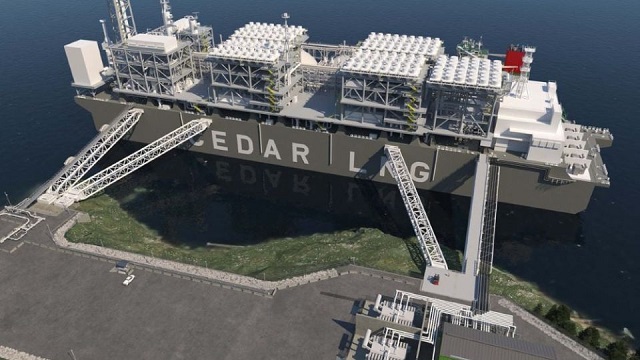
Rendering courtesy Cedar LNG
From the Canadian Energy Centre
By Cody Ciona
“Everyone wins if Canada can get into the game.”
Canada’s emerging liquefied natural gas (LNG) industry has an opportunity to become a key supplier for energy-hungry countries in Asia and beyond following the U.S. pause on new or pending LNG export approvals, industry watchers say.
With much of the world looking for alternatives to Russian natural gas following its invasion of Ukraine in 2022, the U.S. emerged as the number one global exporter of LNG. According to the International Energy Agency, the U.S. accounted for 80 per cent of additional supply in 2023.
But with the U.S. putting its LNG industry on pause, the timing could be good for Canada.
The recent completion of the Coastal Gaslink pipeline along with progress on Canada’s first LNG export projects are bringing Canada closer to becoming a key global supplier.
An opportunity to showcase clean LNG
As the LNG Canada terminal moves into its final stages of construction, Kitimat, B.C. will become the gateway for exports from Canada.
For First Nations LNG Alliance CEO Karen Ogen, this means Canada, which has so far missed the global LNG boom, will have another chance at becoming a player.
“I think this is an opportunity for us to showcase our clean LNG and I think we can do it through the various projects [underway].” Ogen said.
Those projects, which include LNG Canada and Woodfibre LNG that are under construction, along with the proposed Cedar LNG and Ksi Lisims LNG terminals, will operate with an emissions intensity less than half that of the global average.
Cedar LNG, headed by the Haisla First Nation, will operate at less than one-third of the global average.
Ogen said these projects will create significant prosperity, not just for Canada and B.C. but for Indigenous peoples as well.
“It’ll help boost our Canadian economy, it’ll help B.C.’s economy, and most specifically it will help the Indigenous people and our economy. If we’re the most disadvantaged population living in poverty, then this should help our people get out of poverty.” she said.
“Everyone wins if Canada can get into the game.”
Reduced LNG supply could increase reliance on coal
Racim Gribaa, founder and president of Global LNG Consulting Inc., said a potential decrease in LNG exports to international markets, particularly in Asia, may heighten dependence on coal, thereby escalating global emissions.
“If [importers] can’t get U.S. LNG, they would be left with very few viable alternatives including coal. And if they burn coal, that’s twice as much emissions. Coal is cheaper and reliable, but emits twice as much carbon. Countries in Asia such as China, with over 1,140 operational coal plants, are building new coal plants every week both in Asia and abroad,” Gribaa said.
Canada has a significant geographical advantage to supply LNG to Asia that can reduce associated transportation emissions by up to 60 per cent, he said.
Export terminals in B.C. are about half the distance to Asia compared to terminals on the U.S. Gulf Coast.
“The distance between Canada and the key market is a huge advantage, where we are the same distance to Asia as Australia,” Gribaa said.
“Monetizing natural gas in Canada through LNG exports not only will help reduce global emissions but it also will enhance health and economic well being of Canadians future generations.”
Establishing Canada’s LNG credibility
The starting point will be LNG Canada in 2025, which will allow Canada to export LNG on international scale, Gribaa said. It will help establish Canada’s credibility as a supplier, just as the U.S. pauses new development.
Once that credibility is established, Canadian LNG could become a bigger player on the global scale.
“Canada’s abundant natural gas reserves empower the nation to produce and export decades of dependable, cost-effective, and environmentally-friendly LNG to global markets, leveraging direct marine routes unaffected by constraints like the Panama or Suez Canals, the Strait of Hormuz, or having to navigate around the Cape of Good Hope,” Gribaa said.
“Canada stands poised to secure market share for years to come, irrespective of whether the U.S. temporarily halts or reconsiders its involvement.”
Alberta
Alberta’s massive oil and gas reserves keep growing – here’s why
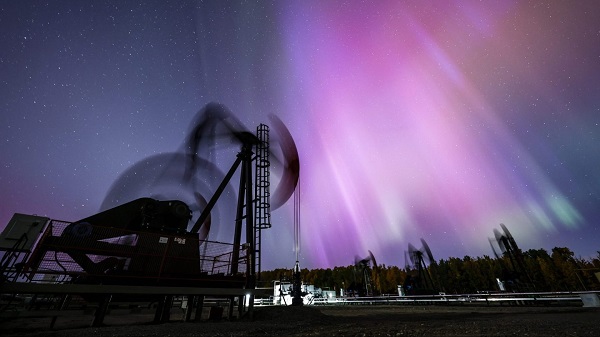
From the Canadian Energy Centre
Q&A with Mike Verney, executive vice-president, McDaniel & Associates
New analysis commissioned by the Alberta Energy Regulator has increased the province’s natural gas reserves by 440 per cent, bumping Canada into the global top 10.
Alberta’s oil reserves – already fourth in the world – also increased by seven billion barrels.
The report was conducted by Calgary-based consultancy McDaniel & Associates. Executive vice-president Mike Verney explains what it means.
CEC: What are “reserves” and why do they matter?
Verney: Reserves are commercial quantities of oil and gas to be recovered in the future. They are key indicators of future production potential.
For companies, that’s a way of representing the future value of their operations. And for countries, it’s important to showcase the runway they have in terms of the future of their oil and gas.
Some countries that have exploited a lot of their resource in the past have low reserves remaining. Canada is in a position where we still have a lot of meat on the bone in terms of those remaining quantities.
CEC: How long has it been since Alberta’s oil and gas reserves were comprehensively assessed?
Verney: Our understanding is the last fully comprehensive review was over a decade ago.
CEC: Does improvement in technology and innovation increase reserves?
Verney: Technological advancements and innovation play a crucial role in increasing reserves. New technologies such as advanced drilling techniques (e.g., hydraulic fracturing, horizontal drilling), enhanced seismic imaging and improved extraction methods enable companies to discover and access previously inaccessible reserves.
As these reserves get developed, the evolution of technology helps companies develop them better and better every year.
CEC: Why have Alberta’s natural gas reserves increased?
Verney: Most importantly, hydraulic fracturing has unlocked material volume, and that’s one of the principal reasons why the new gas estimate is so much higher than what it was in the past.
The performance of the wells that are being drilled has also gotten better since the last comprehensive study.
The Montney competes with every American tight oil and gas play, so we’re recognizing the future potential of that with the gas reserves that are being assigned.
In addition, operators continue to expand the footprint of the Alberta Deep Basin.
CEC: Why have Alberta’s oil reserves increased?
Verney: We discovered over two billion barrels of oil reserves associated with multilateral wells, which is a new technology. In a multilateral well, you drill one vertical well to get to the zone and then once you hit the zone you drill multiple legs off of that one vertical spot. It has been a very positive game-changer.
Performance in the oil sands since the last comprehensive update has also gone better than expected. We’ve got 22 thermal oil sands projects that are operating, and in general, expectations in terms of recovery are higher than they were a decade ago.
Oil sands production has grown substantially in the past decade, up 70 per cent, from two million to 3.4 million barrels per day. The growth of several projects has increased confidence in the commercial viability of developing additional lands.
CEC: What are the implications of Alberta’s reserves in terms of the province’s position as a world energy supplier?
Verney: We’re seeing LNG take off in the United States, and we’re seeing lots of demand from data centers. Our estimate is that North America will need at least 30 billion cubic feet per day of more gas supply in the next few years, based on everything that’s been announced. That is a very material number, considering the United States’ total natural gas production is a little over 100 billion cubic feet per day.
In terms of oil, since the shale revolution in 2008 there’s been massive growth from North America, and the rest of the world hasn’t grown oil production. We’re now seeing that the tight plays in the U.S. aren’t infinite and are showing signs of plateauing.
Specifically, when we look at the United States’ largest oil play, the Permian, it has essentially been flat at 5.5 million barrels per day since December 2023. Flat production from the Permian is contrary to the previous decade, where we saw tight oil production grow by half a million barrels per day per year.
Oil demand has gone up by about a million barrels a day per year for the past several decades, and at this point we do expect that to continue, at the very least in the near term.
Given the growing demand for oil and the stagnation in supply growth since the shale revolution, it’s expected that Alberta’s oil sands reserves will become increasingly critical. As global oil demand continues to rise, and with limited growth in production from other sources, oil sands reserves will be relied upon more heavily.
Canadian Energy Centre
Experts urge caution with Canadian energy in response to Trump tariffs

From The Canadian Energy Centre
By Will Gibson
‘We want Americans to stand up for our supply’
A lawyer by training, Gary Mar is also a keen student of history. And he recommends Canadians look at what happened when past U.S. administrations imposed tariffs on imports before jumping to add costs to Canadian energy.
“President Richard Nixon imposed a 10 per cent tariff in 1971 and withdrew it after a few months because it caused so much pain for American consumers,” says Mar, CEO of the Canada West Foundation, who served as Alberta’s trade representative in Washington from 2007 to 2011.
“Canadians and their governments need to be patient. Any tariffs on energy will be passed on to consumers in the United States. We shouldn’t let the president off the hook for raising the price to American drivers by putting more duties on energy we export,” he says.
“We want Americans to stand up for our supply, not displace the anger with President Trump for raising prices with anger towards Canadians.”
A major U.S. supplier
The U.S. imports more than four million barrels of oil per day from Canada, or about one out of every five barrels the country consumes. Most Canadian imports are destined for refineries in the U.S. Midwest including Illinois, Indiana, Michigan and Ohio.
About 99 per cent of natural gas imports into the United States also come from Canada. Natural gas imports flow primarily to Idaho, North Dakota, Minnesota and Montana, according to the U.S. Energy Information Administration.
Trump tariffs
Nixon put tariffs in place in an attempt to weaken the U.S. dollar against foreign currencies and strengthen U.S. exports.
Mar, who served as cabinet minister in the Klein and Stelmach governments from 1993 to 2007, sees Trump’s tariffs as aimed to repatriate manufacturing and jobs to America.
“President Trump made this explicitly clear…if you want to sell manufactured goods in the United States, you need to move your factories here,” says Mar.
“But Canadian oil and natural gas are key inputs that help U.S. manufacturing. We ship the products or partially refined products that support manufacturing of finished products in the United States. Tariffs will raise those costs for U.S. manufacturers and ultimately American consumers.”
A divisive rerun of the National Energy Program?
Mar’s former cabinet colleague Ted Morton agrees Canada needs to exercise patience and caution in any response to U.S. tariffs.
Morton, who served as an Alberta cabinet minister from 2006 to 2012, strongly disagrees with the idea of placing countervailing tariffs on energy exports to the United States. Morton casts it as a divisive rerun of then Prime Minister Pierre Trudeau’s controversial National Energy Program in the early 1980s.
Energy export tariffs “would be an attempt to revive Liberal Party support from disillusioned voters in Ontario and Quebec,” he says.
“The biggest loser in Trump’s new tariff war will be Ontario due to the integration of the auto sector between the U.S. and Canada. It’s simple political arithmetic. Ottawa could collect $4 or $5 billion by taxing energy exports in western Canada and send that money to prop up struggling industries in Ontario and Quebec,” Morton says.
“Ontario and Quebec combined have a total of 199 MPs, more than enough to form a majority government. It’s the ‘screw the West and take the rest’ strategy. It’s how the Liberals won the 1980 federal election, and they could try it again.”
Legal and constitutional precedents
And while imposing export tariffs on Canadian energy could be politically popular in central Canada, Morton suggests the action would not withstand a legal challenge thanks to legal and constitutional precedents set by former Alberta Premier Peter Lougheed.
“Peter Lougheed left future Alberta premiers with some very effective legal weapons. His government successfully challenged the constitutionality of Trudeau’s export tax on natural gas. He then teamed up with the other western premiers to negotiate a new constitutional amendment that affirms provincial jurisdiction over the development and conservation of natural resources,” Morton says.
“Premier Danielle Smith should win any constitutional challenge if the federal government tries to impose an export tariff on oil or natural gas.”
Morton, like Mar, also counselled patience in responding to tariffs because “Trump’s tariffs on Canadian energy will punish American consumers more than Canadians.”
The national interest
David Yager, who has studied and analyzed energy policy for more than 40 years, agrees tariffs on energy have the potential to drive a wedge between Alberta and the rest of the country in the same way the National Energy Program did.
“The dynamic definition of national interest is what I struggle with. Going back several decades, it was in the national interest to get oil and gas across Canada so there was a drive to build pipelines east and west,” says Yager, a consultant who also serves as a special advisor to Premier Smith.
“Today, the national interest has flipped again, and energy exports are now a source of revenue to save the ‘real’ Canada, which is central Canada. It’s the same kind of logic that has seen the emissions cap on oil and gas as well as the carbon tax.”
If Canada wants to retaliate, Yager recommends putting a duty on the 1.7 billion cubic feet of natural gas imported by Ontario and Quebec from the northeastern United States.
“That would be the appropriate tit for tat response,” Yager says.
“You could build a nice pool of capital and clobber U.S. producers without driving a wedge between Alberta and the rest of the country.”
-

 Business1 day ago
Business1 day agoDOGE discovered $330M in Small Business loans awarded to children under 11
-

 2025 Federal Election1 day ago
2025 Federal Election1 day agoThe High Cost Of Continued Western Canadian Alienation
-

 COVID-191 day ago
COVID-191 day ago17-year-old died after taking COVID shot, but Ontario judge denies his family’s liability claim
-
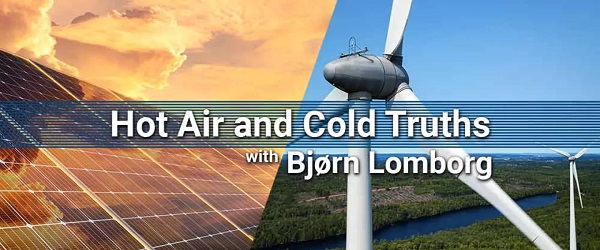
 Economy2 days ago
Economy2 days agoSolar and Wind Power Are Expensive
-

 Business2 days ago
Business2 days agoWhy a domestic economy upgrade trumps diversification
-

 Daily Caller1 day ago
Daily Caller1 day agoCover up of a Department of Energy Study Might Be The Biggest Stain On Biden Admin’s Legacy
-
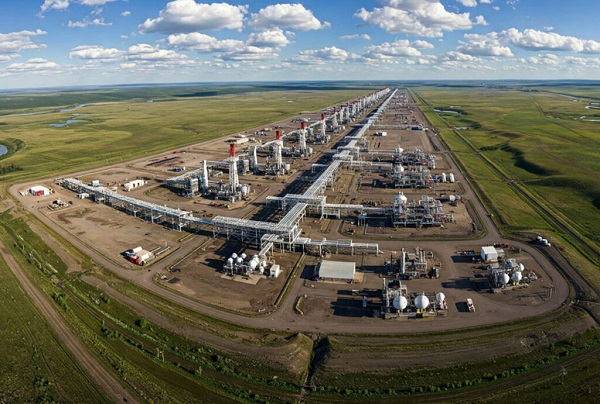
 Economy2 days ago
Economy2 days agoClearing the Path: Why Canada Needs Energy Corridors to Compete
-
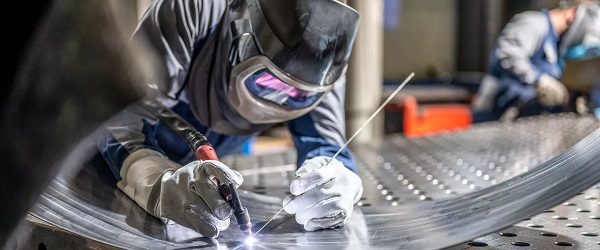
 Business2 days ago
Business2 days agoTariff-driven increase of U.S. manufacturing investment would face dearth of workers





